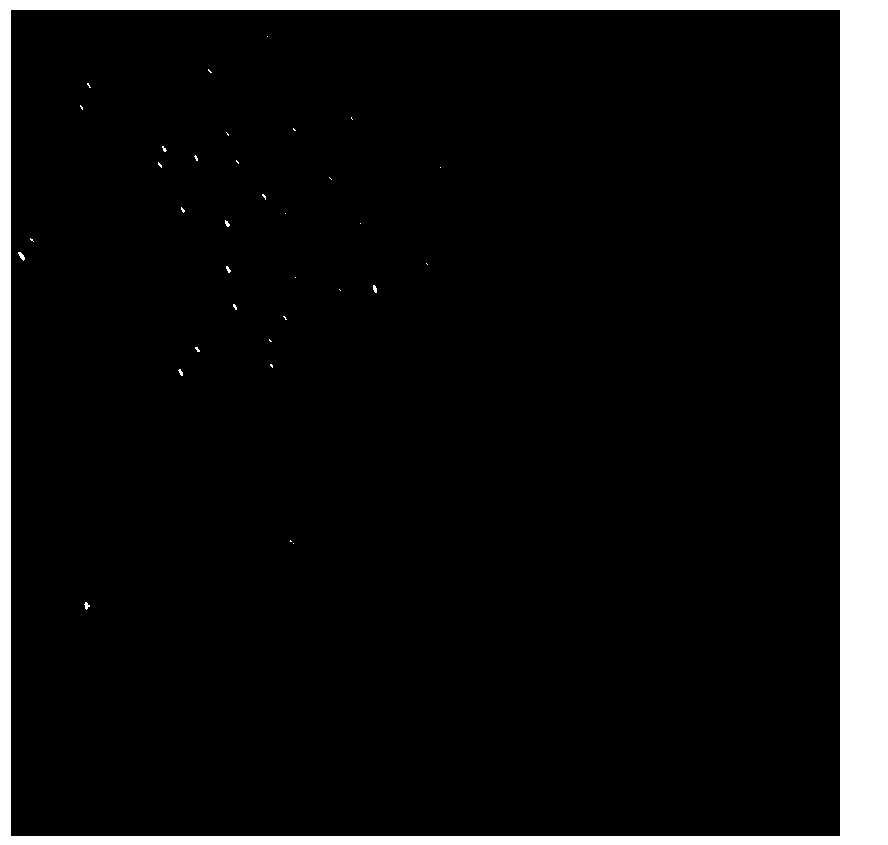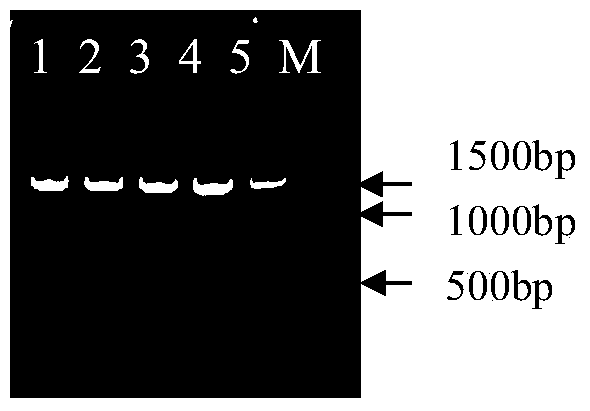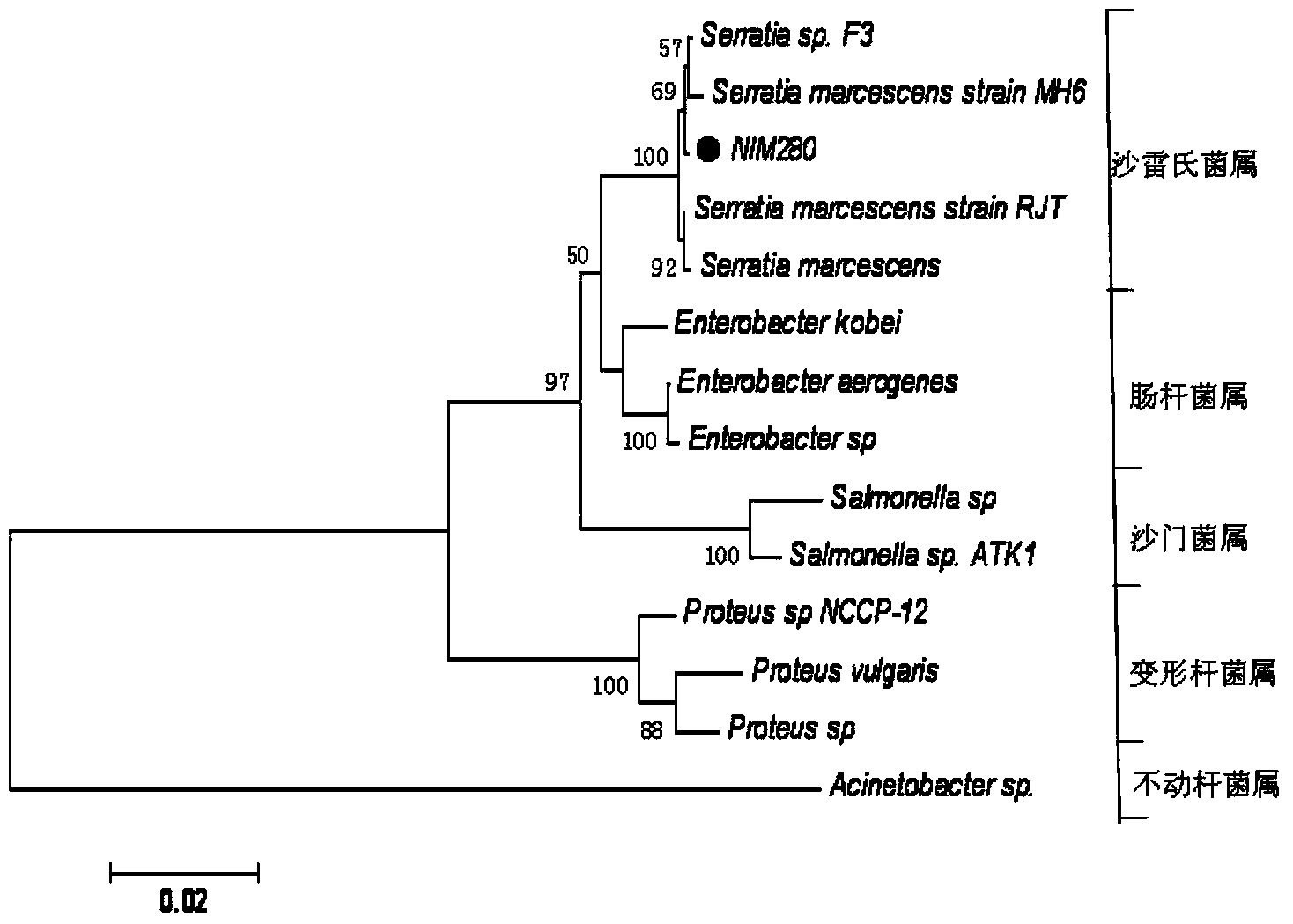Serratia marcescens NlM280 and application thereof as insecticide
A Serratia marcescens, insecticide technology, applied in the direction of insecticide, application, biocide, etc., can solve the problems of easy drug resistance, poor stability, narrow insecticidal spectrum, etc., and achieve potential application value Effect
- Summary
- Abstract
- Description
- Claims
- Application Information
AI Technical Summary
Benefits of technology
Problems solved by technology
Method used
Image
Examples
Embodiment 1
[0029] Screening, identification and preservation of embodiment 1, bacterial strain N1M280
[0030] (1) Screening of strains
[0031] The brown planthopper natural pathogenic body (body color is all red) of the brown planthopper population Mudgo raised in the Fuyang laboratory of China Rice Research Institute was surface-sterilized with 75% ethanol aqueous solution for 5 minutes, and the body was ground into powder. Bacterial water was serially diluted (the specific dilution gradient is 10 times, 100 times, and 1000 times), and the 1000-fold dilution was taken and spread on the LB solid medium, cultured at 28°C for 12 hours, and a single colony was obtained, and the red single The colony is designated as strain N1M280.
[0032] (2) Identification of strains
[0033] The physiological and biochemical characteristics of the strain are:
[0034] Spread the strain N1M280 on the LB solid medium, activate it at 28°C for 24 hours, see the plate growth of the strain N1M280 figure ...
Embodiment 2
[0040] Embodiment 2, the preparation of bacterial suspension
[0041] (1) Incline cultivation
[0042] Serratia marcescens N1M280 was inoculated onto LB solid medium and kept at 28°C for 24 hours to obtain slants.
[0043] (2) Seed culture: pick a single colony from the slant and inoculate it in 3 mL of LB liquid medium, keep the temperature at 28° C., shake at 200 rpm for 24 hours, and obtain the seed liquid.
[0044] (3) Fermentation culture: Inoculate 500 μL of seed liquid into 50 mL of LB liquid medium for expanded cultivation, keep the temperature at 28°C, shake and cultivate at 200 rpm for 8 hours, and when the OD600 value of the bacteria reaches 1.0, obtain the fermentation culture medium, and use LB Adjust the cell density of the culture medium to l×l0 8 CFU / mL, made into bacterial suspension.
Embodiment 3
[0045] Embodiment 3: the pathogenicity of the bacterial suspension of Serratia marcescens N1M280 to brown planthopper
[0046] (1), the pathogenicity of the strain detected by injection method:
[0047] Select 3-4 instar N. lugens nymphs, and use an eppendorf microinjector (model TransferMan NK2, manufacturer Shanghai Eppende Co., Ltd.), to inject 0.1 μL of the bacterial suspension prepared by the method in Example 2 into each N. lugens planthopper. Where the base is soft, see Figure 4 , with the injection of LB liquid medium as a control, the brown planthopper was inoculated on the rice variety (Taichung Native1) TN1 at the tillering stage after the injection, and each rice plant was covered with a cage, and each cage received 50 brown planthoppers after the injection. Repeat three times. Place the cage in a large basin with water, and control the indoor temperature at 25±1°C and humidity around 80%. The dead insects caused by the injection operation were eliminated withi...
PUM
 Login to View More
Login to View More Abstract
Description
Claims
Application Information
 Login to View More
Login to View More - R&D
- Intellectual Property
- Life Sciences
- Materials
- Tech Scout
- Unparalleled Data Quality
- Higher Quality Content
- 60% Fewer Hallucinations
Browse by: Latest US Patents, China's latest patents, Technical Efficacy Thesaurus, Application Domain, Technology Topic, Popular Technical Reports.
© 2025 PatSnap. All rights reserved.Legal|Privacy policy|Modern Slavery Act Transparency Statement|Sitemap|About US| Contact US: help@patsnap.com



